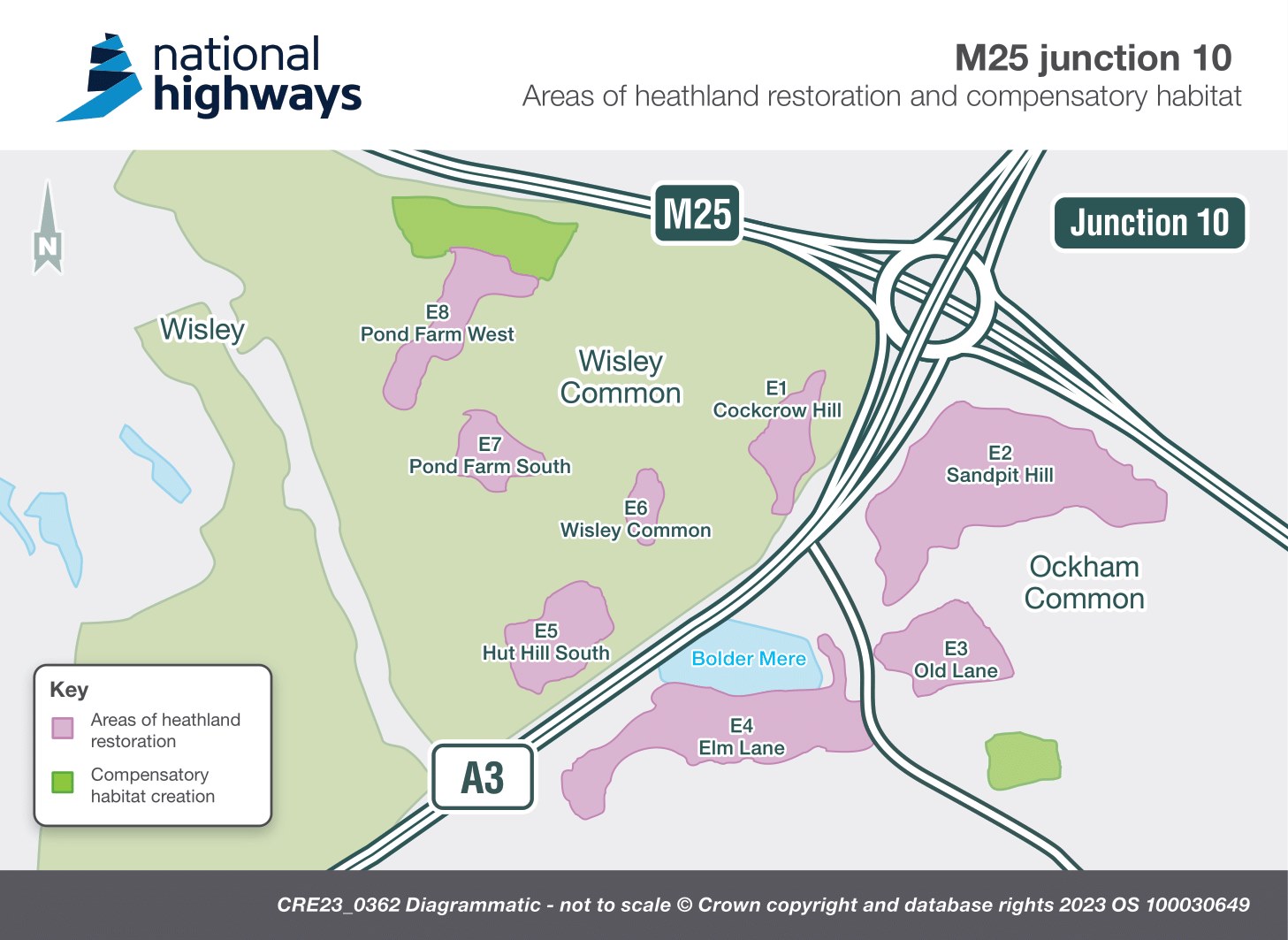M25 junction 10 and the environment
As part of our work on M25 junction 10, we're restoring heathland, replacing lost habitats and improving wetlands. We're also building the UK's first heathland green bridge.
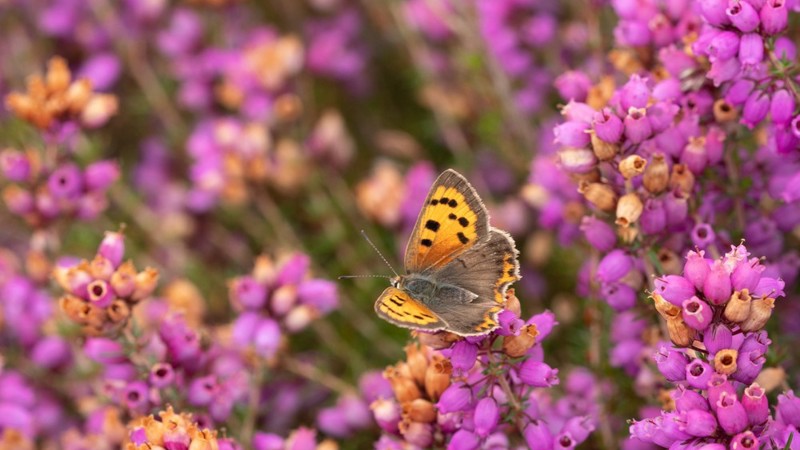
Heathland restoration
M25 junction 10 is surrounded by ancient heathland.
Over the last 200 years, ancient heathland habitats in Surrey have declined by 85%. Around junction 10, a lot of heathland was lost when conifers were planted for timber.
The result is dense woodland dominated by Scots pine and Birch. Overcrowded trees lead to poor ecological conditions. The animals and plants that depend on heathland habitat disappear.
By clearing areas of woodland, we'll allow the heathland to regenerate.
In this way we'll restore large areas of lost heathland at Wisley and Ockham Commons.
Felling trees can look harsh and desolate, but it actually helps bring back rare wildlife and allows the heathland to grow.
Where possible, we'll use felled trees and shrubs in habitat creation. We'll also recycle them into everyday products including fencing, benches and animal bedding.
Our restoration work will be phased over several years.
We’ve also committed to manage and monitor restored and enhanced heathland for up to 25 years while they establish.
Maintaining habitats for wildlife
Where we clear or thin out woodland, we’re taking steps to protect local wildlife.
We perform regular surveys to understand local habitats and the types of animals that live in them.
Where we clear habitats temporarily for construction, we'll reinstate them or establish new ones.
Birds
We've designed our work to protect local birds by avoiding the nesting season.
Restoring heathland will provide key nesting habitat for woodlarks, Dartford warblers and nightjars.
Toads
Underpasses with protective fencing will allow toads to move safely on their journeys to and from breeding ponds.
Bats
Nine species of bat live in this area. We've designed lighting near pedestrian bridges so it's sensitive to bats and nocturnal animals. We're also installing new bat boxes.
Badgers
We've conducted surveys to identify established badger setts and signs of new ones.
The water environment
Bolder mere
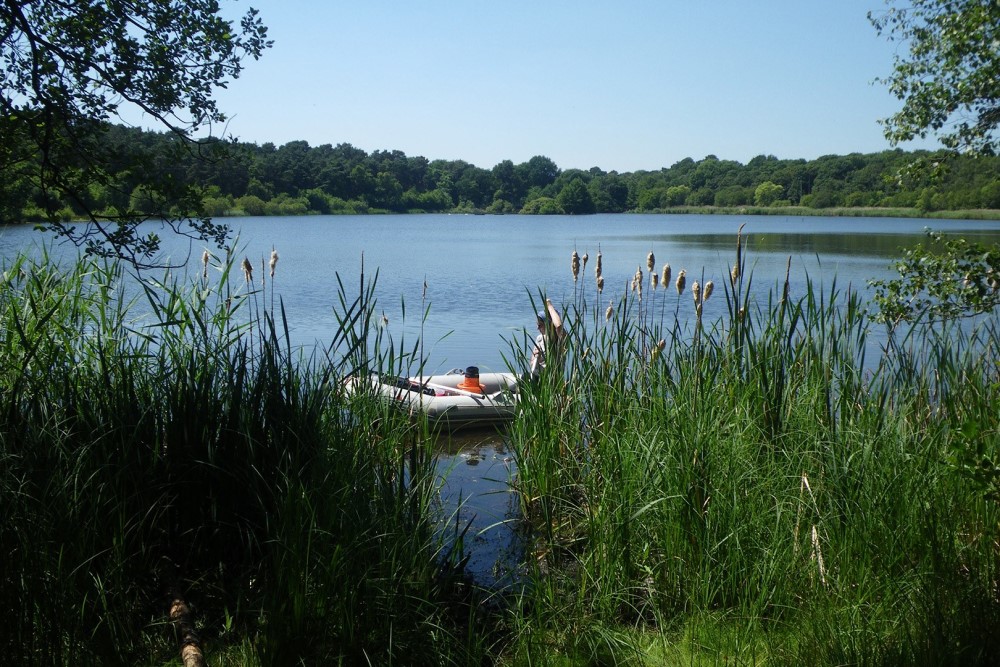
Bolder Mere is a shallow, man-made lake next to the A3.
It is part of the Ockham and Wisley Commons Site of Special Scientific Interest (SSSI). This wetland environment is home to dozens of rare plants and insects. Over 20 species of dragonflies and damselflies live here including:
- the White-faced dragonfly
- local species like the Hairy dragonfly and the Ruddy darter.
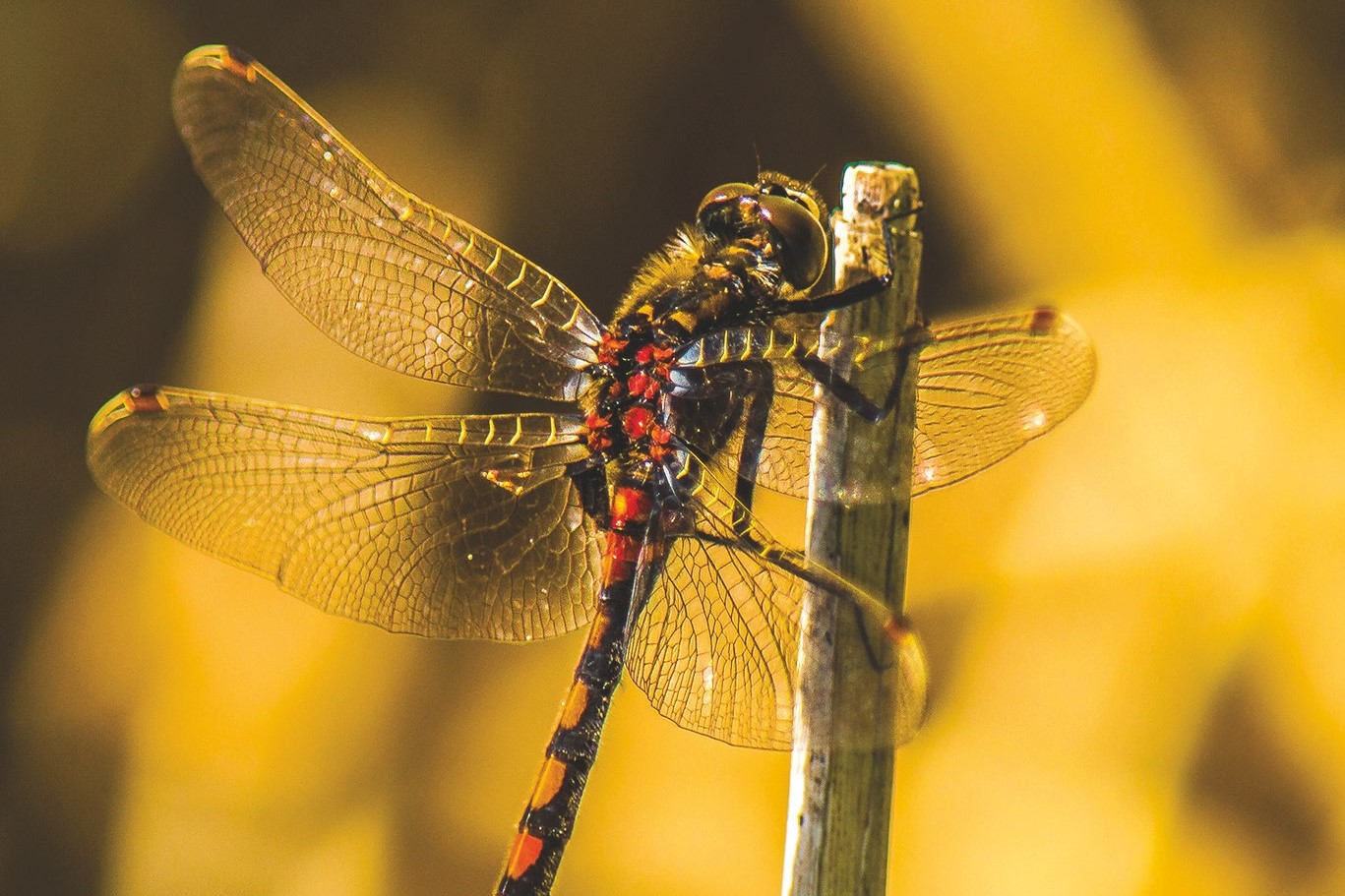
We need to widen the A3 from three to four lanes at this location to help ease congestion.
To do this, we need to take away a small part of the lake.
To compensate, we've developed a 15-year plan to improve habitats around Bolder Mere.
We’ll do this by:
- harvesting and growing reeds from seed in a special plant nursery. We'll use these to create new reedbeds in the future
- removing some trees to allow more light in, supporting wildlife living on and around the lake
- removing non-native invasive species (like Carp and Turkish Crayfish) that reduce water quality and threaten other indigenous water wildlife
These improvements will also attract a range of birds to the area, including many species of waterfowl in Winter months.
Road drainage and attenuation ponds
We’re improving road drainage along the scheme to protect habitats like Bolder Mere and Stratford Brook.
We use ponds (known as drainage ditches and attenuation ponds) to store water running off the road. We'll plant these ponds with seed mixes suited to the local environment.
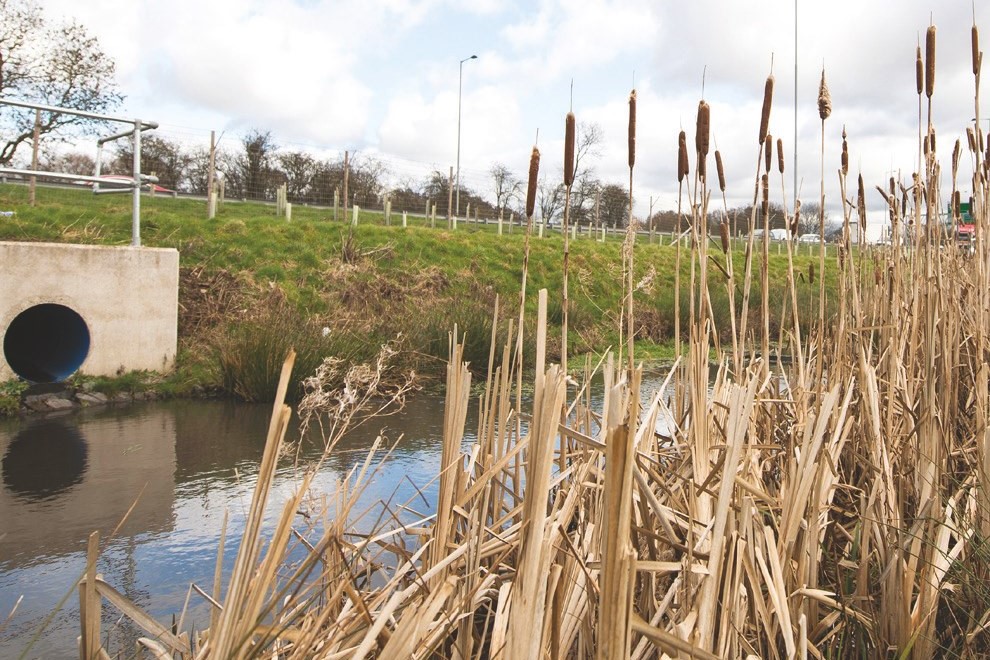
We'll build a culvert at the new Elm Lane. This will carry the stream running from the former Wisley Airfield and Wilderness Farm areas to Bolder Mere.
Stratford Brook
We’re making it easier for wildlife to pass along Stratford Brook, a small stream flowing under the A3 at Ockham.
We'll build the new Wisley Lane link road over the brook, allowing animals to pass freely underneath.
We'll plant hedges to guide mammals under the bridges and away from roads.
Cockrow heathland bridge
Our scheme includes the UK’s first heathland green bridge.
Cockrow bridge (30m wide and 68m long) will connect Ockham and Wisley commons for the first time.
We'll plant the bridge with heather and other heathland shrubs. It will provide a safe, natural corridor for local wildlife to spread and increase across the local area. This includes animals like sand lizards, silver studded butterflies and heath tiger beetles,
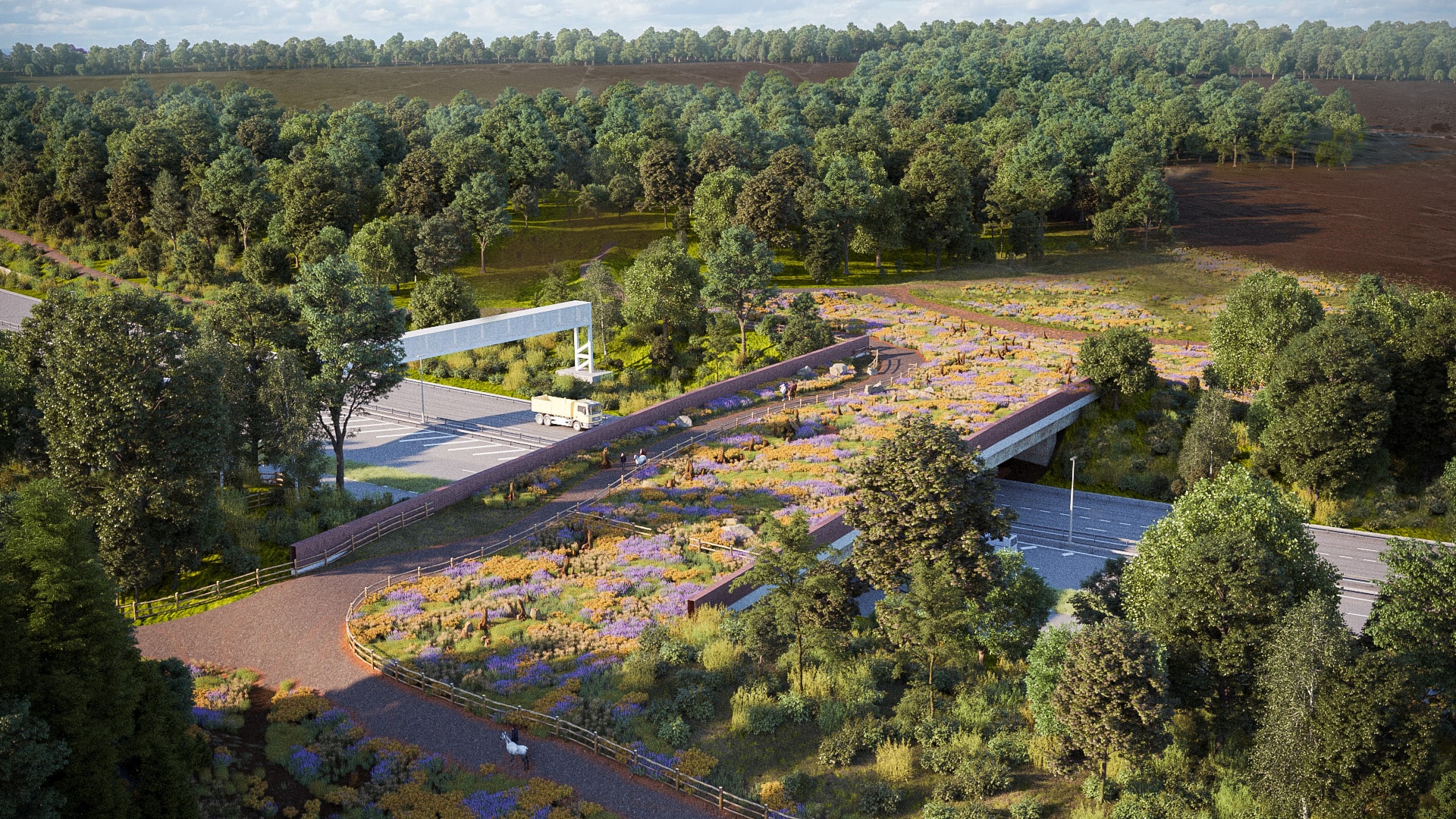
Pedestrians, cyclists and horse-riders will be able to cross the bridge on a four metre wide track.
Only a limited number of vehicles will use the bridge to access properties on Wisley Common.
